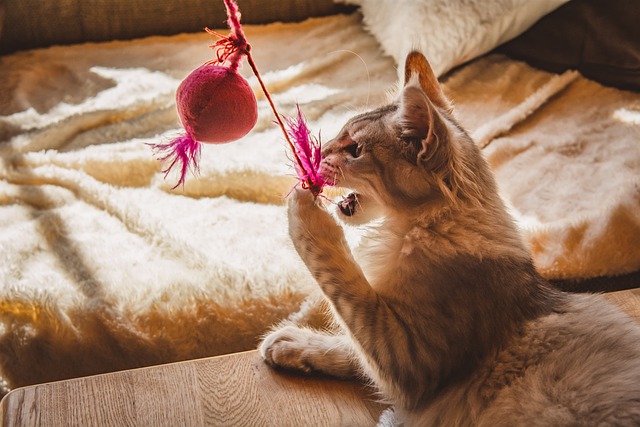
Claw marks on your curtains, sofas, and even your arms are commonplace when you are a cat owner. And since I’m not a proponent of declawing cats, the best way I know of to deal with sharp cat claws is to trim them regularly and encourage your cats not to claw on certain objects.
Trimming a cat’s nails can either be a breeze or a big production, depending on your cat, your attitude, and your state of mind. One of the best things you can do for yourself and your cat is to start early. Start clipping your cat’s nails when she is a kitten.
Get your cat used to handling its paws
You should start working with your cat as soon as possible. Don’t worry if your cat is now an adult. It will just take more time to get her used to handling her paws and nails. Just follow the same guidelines.
Start by gently holding your cat and stroking her paws. You want him to get used to being handled and having his paws touched and manipulated. Always give your cat a treat when you do these exercises so that she associates the handling with something pleasant. Praise him at all times.
Once your cat is used to having her paws handled and feels comfortable, begin to gently squeeze her paw to expose the nails. To do this, use your thumb on the top and index finger on the bottom of the paw and gently squeeze. The nails will come out. Praise him and give him treats.
Continue practicing this technique until your cat lets you do it willingly and has no problem with it. Practice how much pressure you need to put on the paw to fully expose your cat’s claws without pressing too hard.
Then start playing with your cat’s claws.
Simply manipulate the claws, hold the claws and see what your cat allows you to do. Don’t forget to praise him.
Look closely at the nail and note that towards the tip, the nail is whitish or light in color. Further down, a little toward the paw, you will see a pinkish color, called the “quick. It is this pink area that you should avoid when trimming the nails, as it contains nerves and blood vessels. Just cut the end of the nail to get rid of that super sharp end, right before the “quick”. If you cut into the “quick” of the nail, your cat will feel a lot of pain and the nail will bleed a lot. Your cat will be fine, but it will bleed profusely.
This part of training your cat to let you work on her nails may take some time. It may take a few days before you can try clipping her claws, or it may take several weeks. It depends on your cat and you. Very young kittens will adapt more quickly than an adult cat that has never had its claws clipped before.
You also need to be confident and relaxed. You shouldn’t rush it, and if you’re very nervous about it, perhaps another family member should do the clipping.
Trimming your cat’s nails
To trim your cat’s claws, start by doing it when your cat is in a relaxed state, not in a state of arousal and play. I like to clip my cat’s nails when I see her start to calm down. If I am gentle and quick enough, he barely moves during the whole process. You should not sneak up on your cat while she is sleeping to try to clip her claws, as this will startle her and she will lose confidence in you.
Prepare special treats to give your cat during and after the clipping. You want your cat to associate nail trimming with something very positive.
Be sure to use a sharp pet nail clipper. You can place your cat on your lap, on a table, or on a chair. Make sure you are both relaxed.
Make sure you have towels and styptic powder or a styptic pencil where you work.
Gently take one paw and press down on the pad to lengthen the nails as you practiced.
If you accidentally cut the quick, soothe your cat and use a styptic pencil or styptic powder to stop the bleeding. Also, make sure you have towels handy. Monitor the nail over time to avoid infection.
When trimming the nail, use the clippers perpendicular to the nail, and use a quick, decisive motion to avoid crushing or splitting the nail. If you hesitate, your cat may squirm, and you may cut into the “quick”.
Do this for all nails, including the dewclaw.
You can trim the back nails, but most pet owners find it unnecessary to trim them often. I usually only trim my cat’s back nails every other size.
If your cat simply won’t cooperate, you may have rushed the process. Go back to handling your cat’s paws and don’t try to clip them again until you are sure that you and your cat have bonded and that your cat is likely to cooperate. You can also wrap your cat in a sheet or blanket to clip its claws. Being wrapped may calm or further irritate your cat. This will depend on your cat.
Some cats are just very difficult to clip. If you’ve done everything I’ve taught you, and your cat is not receptive to having his claws trimmed, you can try going to the vet or a professional groomer. They are used to dealing with all types of temperaments and may be able to quickly and effectively trim your cat’s nails with minimal fuss.
If you are reading this, you may be thinking that you want to do it yourself, not have someone do it for you. Some cats need to be handled for a while before they are calm enough for you to trim their claws. Don’t get discouraged. Keep working with your cat, praising her, and possibly offering treats. It may take months before you can easily trim your cat’s nails.
Trimming your cat’s nails every three to four weeks should be sufficient. Every cat is different, so you may need to trim sooner, or you may be able to space the trimming out a little longer.






